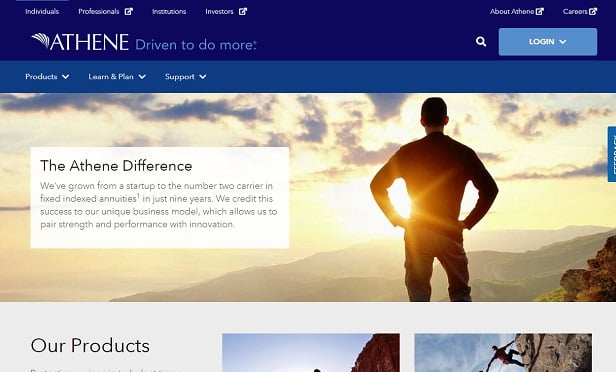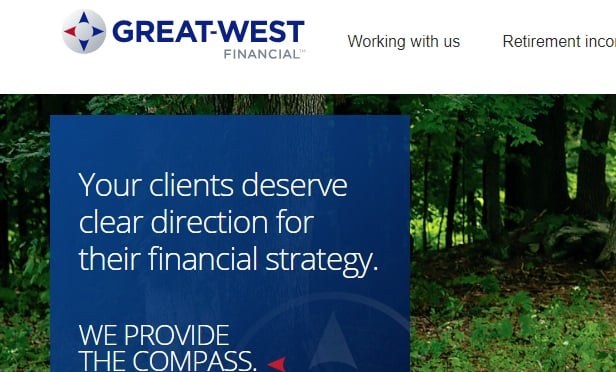Four life insurers have received a collection of rulings from the U.S. Securities and Exchange Commission that could help them eliminate about $12 million in index-linked annuity compliance costs in the first year.
The annuity issuers involved are Allianz Life Insurance Company of North America, Athene Annuity and Life Company, Great-West Life & Annuity Insurance Company, and Midland National Life Insurance Company.
The SEC rulings affect companies that file registration statements and prospectuses for index-linked annuity contracts with the SEC.
(Related: 5 IRI Priorities That Could Help Your Annuity Sales)
The rulings let life insurers use financial statements prepared according to state insurance regulators’ Statutory Accounting Principles (SAP), rather than the Generally Accepted Accounting Principles (GAAP) that ordinary publicly traded companies usually use.
The SEC presented the rulings in the form of “no-action letters.” Insurers, securities brokers and other companies often use requests for no-action letters to clear up what appear to be unnecessary regulatory obstacles, address conflicts in the rules, or verify what the SEC’s interpretation of a complicated or unclear rule actually is.
The new no-action letters were signed by Alison Staloch, the chief accountant at the SEC Division of Investment Management.
What is an SEC “no-action letter”?
An SEC no-action letter gives an SEC staff member’s interpretation of how federal securities laws and regulations work.
In a no-action letter, an SEC staff member states that, in a specific scenario involving a party described in the letter, the SEC will not take any legal action against that party for participating in the activity described in the scenario.
The interpretation in an SEC no-action letter is less firm than the interpretation in an SEC regulation, but, in practice, financial services companies often assume that, if the SEC has allowed some practice in a no-action letter, they can probably get permission to follow the same approach.
In the requests for the current batch of no-action letters, for example, lawyers for the life insurers point out the SEC gave Great-West permission to use SAP financial statements with variable annuity contract filings in a no-action letter issued in November 2016.
Why do life insurers need to jump through a lot of hoops to use SAP financial statements with index-linked annuity filings?
Traditionally, SEC officials have wanted investors to see financial statements presented using the GAAP rules, to help investors compare companies on an apples-to-apples basis.
Life insurers have been arguing, for decades, that purchasers of life insurance-based products and annuity-based products care more about the solvency of the issuers, not the kinds of short-term financial performance measures of interest to people who buy ordinary stocks and bonds.
Life insurers have asserted that the SAP rules are as rigorous as GAAP rules and give the reader more information about long-term solvency.
Life insurers have persuaded the SEC to allow more and more use of SAP financial statements, in place of GAAP financial statements, over the years.
An SEC regulation already lets mutual life insurers, which do not normally prepare GAAP financial statements, file SAP financial statements in place of GAAP financial statements.
The SEC extended that same treatment to life insurers’ variable annuity filings in the November 2016 Great-West no-action letter.
The Committee of Annuity Insurers, an issuer group, asked the SEC to provide the same treatment for issuers of all types of annuities that have to file filings with the SEC..
Why do the insurers refer to “index-linked annuities,” not “indexed annuities”?
Because of a provision in a federal law enacted in 2010, life insurers can usually have indexed annuities that protect holders against loss of principal classified as fixed annuity products, rather than as variable annuities. Life insurers can file those fixed indexed annuity contracts with state insurance regulators, and not with the SEC.
These days, insurers are also offering “structured annuities,” or “”buffer annuities.” The issuers of those annuities let the holders put some assets in fixed-rate options and some in options with returns linked to the performance of investment indexes, such as the S&P 500.
The issuers protect some or all of the account value allocated to the fixed-rate option.
When holders of structured annuities allocate account value to the index-linked options, the annuity holders may face the risk of losing money.
The new no-action letters apply to issuers of structured annuities, or to other index-linked annuities subject to SEC filing requirements, not to issuers of indexed annuity products that are free from SEC filing requirements.
What does the Insured Retirement Institute think?
The Insured Retirement Institute (IRI) is welcoming the no-action letters.
“This is a positive decision by the SEC to remove barriers to entry to a growing market serving consumer needs,” the IRI says in a statement. “This is a win for insurers that can access and expand into this market and it’s a win for consumers who will have greater choices of products. Additionally, the financial information that the SEC is allowing to be considered is more relevant to a consumer. SAP financials focus on insurers’ financial strength, solvency, and ability to meet policyholder obligations, and therefore will be more useful than GAAP financials to prospective purchasers of these products.”
How big could the effect of this new interpretation be?
Wink Inc. has started conducting structured annuity issuer surveys this year. First-half data suggest that issuers could generate about $10 billion in structured annuity sales this year.
Allianz Life and Great-West, two of the three issuers that told the SEC about their GAAP financial reporting costs, account for about 21% of the first-half structured annuity sales included in the data.
Wink did not include data from Midland National and Athene in the structured annuity sales totals.
If the new SEC interpretation would save Allianz Life and Great-West about $3.5 million per year, and those companies account for about 20% of U.S. structured annuity issuer financial reporting spending, it’s possible that the new interpretation could save all structured annuity issuers combined about $17 million per year, according to ThinkAdvisor calculations.
Resources
Copies of the no-action letters are available here.
— Read Hedging And Protecting VA Blocks Against Turbulence, on ThinkAdvisor.
— Connect with ThinkAdvisor Life/Health on LinkedIn and Twitter.







 October 09, 2018 at 04:31 PM
October 09, 2018 at 04:31 PM















 Slideshow
Slideshow





